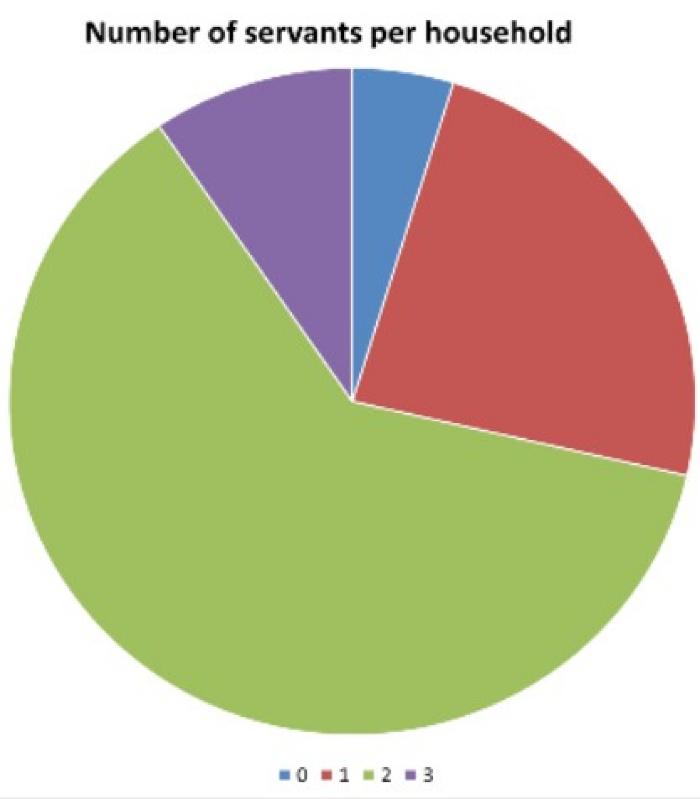Census 1911 - Reynolds Close description
Reynolds Close
What were the houses like?
- There were 25 houses but at the time of the 1911 Census, four had yet to be occupied (numbers 2,5,14 and 24), whilst two others, (number 3 and 18) were occupied only by servants (in one case it is likely that the couple [Mr and Mrs Singer] were evading the Census as she had been imprisoned as a suffragette and he was sympathetic).
- The homes are in groups, semi-detached pairs, one is detached.
- Some variety in the number of rooms, but these are large properties compared with many Suburb homes, especially in the Artisan’s Quarter.
- The average number of rooms per property is 9.2 (very similar to the adjacent Heath Close at 9.4).
- Two properties with 8 rooms, four with 10 rooms and only one (the only detached house?) with 11 rooms
Who lived there?
- There were 107 people in the 21 occupied houses
- There were 36 males and 71 females.
- Marked gender imbalance, with females dominating in a ratio of 2:1. This was similar to Heath Close (63%) and due to presence of female servants ‘living in’.
- 95% of the occupied houses have at least one servant. The average number is 1.76, with most homes having two servants and two having three servants.
- Many homes had a Cook and a more general servant, whilst those with young children frequently had a nurse.
- One home had a male servant employed as a butler.

- 60 per cent of the households were families with children under 16.
- There were 12 children under 16 years of age (24.5% of total population).
- Average family size was 1.5 children.
- Families of one and two children were equally common (40% each), whilst there was one family with three children under 16
- There were at least two families with adult children still at home
- 4 of the 21 occupied houses were headed by women (just under 20%). In the most cases, they were widows of ‘private means’. One described herself as a suffragist.
- The single female head of household worked as a ‘Swedish remedial gymnast and midwife’
- The number of widows and widowers resulted in a lower proportion of married heads of household at 73.7%.
- The average length of marriage was 8.1 years
- The age structure of the residents differed from the national population as heads of household were young or middle aged.
- Little evidence of the existence of the extended family.
- Almost 10% of those resident on census night were visitors, which is higher than in most roads.
- There was only one person over 65 (who was not a householder, but a boarder).
- The most unusual household was headed by Vincent Hargrave, a Commercial Traveller. As well as his (older) wife and 2 step sons, there were 2 female boarders & a general servant.
- The average age of the residents was 26.8 years reflecting the newness of the Suburb.
Where were residents born?
- The largest percentageof residents were born in London.
- At 37% this was much lower than the average road in HGS at the time of the 1911 Census
- Almost as many (36.1%) were born elsewhere in England,
10.2% were born in the Home Counties,
6.5% in Scotland,
1.9% in Wales
0.9. % in Ireland
6.5% were born abroad.
- Those born in London were frequently the children and a good proportion of the servants.
- Heads of household and other adults were more likely to have been born outside London. This reflects the greater propensity of the educated and higher socio-economic groups to migrate longer distances and the ‘pull’ effect of London as a destination for migrants.
What did residents do?
- 54% of the residents were in employment (but 64% of these were live in servants)
- Only 1/5 of the residents worked outside the home
- Heads of household were largely professional/managerial males in high status roles e.g. physician/surgeon, shipbroker, managing director, Director of the Census of Production.
- Two were self-employed as artist/painters.
- Two surprising exceptions were the commercial traveller and a ‘Salesman (Meat)’ who seem a little ‘out of place’ in this road!
- One female head of household was in employment as a Swedish remedial gymnast and midwife, but the other female heads were widows of ‘private means’.
- A few single women worked outside the home e.g. in teaching and a ‘lady gardener’.
